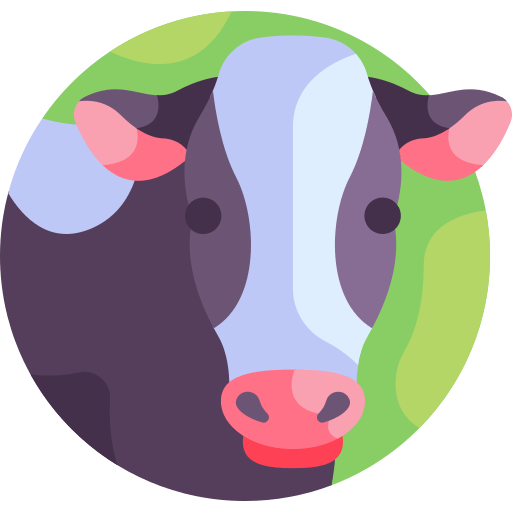Types of Dairy Cows
Dairy cows are bred for their ability to produce milk from which dairy foods are made. While there are many types of cows, in the U.S., there are seven different dairy cow breeds:
- Ayrshire
- Brown Swiss
- Guernsey
- Holstein
- Jersey
- Milking Shorthorn
- Red & White
Learn more about each breed of dairy cow below!
Learn More About the Breeds of Dairy Cows
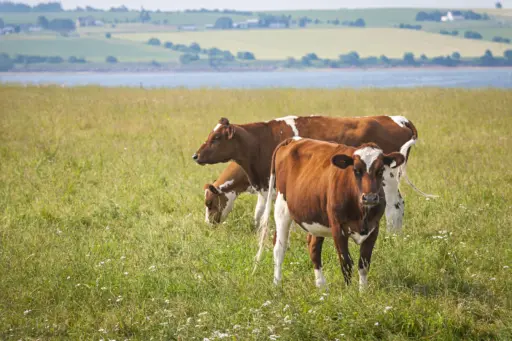
Ayrshire
Origin: This breed was brought to America around 1800 from the county of Ayr in Scotland.
Characteristics: Known as the “aristocrat” of dairy breeds because of their size and vigor. Adult Ayrshire dairy cows weigh 1,200 pounds on average. They are rusty-red and white in color and adapt easily to their environment. Historically, Ayrshires were known for their horns, which could be over a foot long, with a light color and dark tips.
Ayrshire cow’s milk is high-quality and is often regarded as richer and creamier than normal milk. There is also more protein in Ayrshire cattle milk than in traditional milk.
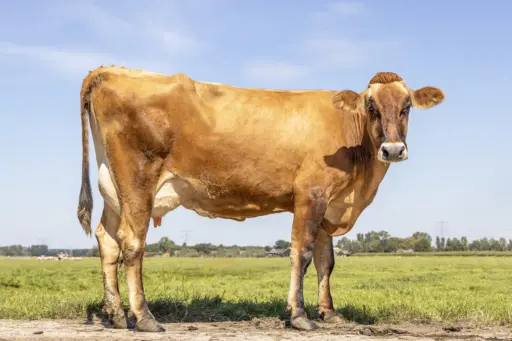
Brown Swiss
Origin: The Alps of Switzerland.
Characteristics: The Brown Swiss is considered the oldest of the dairy breeds. Brown Swiss can vary in color, from silver to dark brown, and have large ears. A typical Brown Swiss cow can weigh around 1,350 pounds. Their milk is ideal for making cheese because of its high protein-to-fat ratio. These cattle were first imported to the United States in 1869.
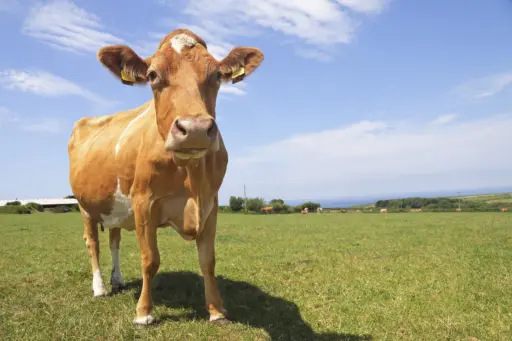
Guernsey
Origin: First raised by monks on the Isle of Guernsey in the English Channel.
Characteristics: Guernsey cows can range from fawn to golden in color and often have white legs and white areas on their bodies. These cows often weigh up to 1,400 pounds. These cows are also known for having an excellent temperament and are excellent grazers. Because they’re excellent grazers, they are often used for pasture-based milk production.
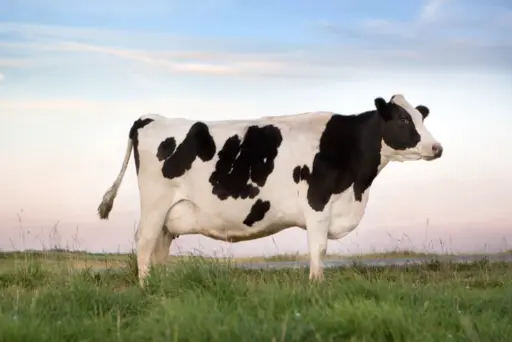
Holstein
Origin: The Netherlands. A Dutch settler brought the first Holstein to America in 1631.
Characteristics: This breed is the most common of the dairy breeds. Originally, this breed was called Holstein Friesian, but the name was shortened to Holstein. The Holstein is the classic black and white dairy cow that most people picture. Holsteins also have better milk production than other dairy breeds. Holstein cows weigh on average around 1,500 pounds, and Holstein calves weigh at least 90 pounds when they’re born.
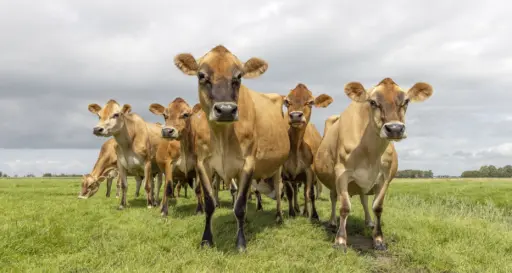
Jersey
Origin: The Isle of Jersey in the English Channel.
Characteristics: The Jersey is the smallest of the dairy breeds and their color ranges from light to dark brown. They typically weigh around 1,000 pounds when they are fully grown and their size makes them easier to handle on smaller farms. The most heat-tolerant of dairy breeds, Jersey cows produce milk with a very high butterfat content (perfect for ice cream). Jersey cows often have nervous dispositions but are known to be easy to work with. The Jersey cow is one of the most common breeds of dairy cows in the United States (the Holstein is first) and is the most common brown dairy cow.
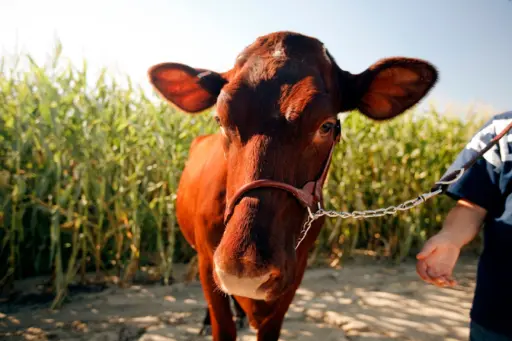
Milking Shorthorn
Origin: Northeastern England in the valley of the Tees River, first coming to the U.S. early in the 1780’s.
Characteristics: Milking Shorthorns are considered a dual-purpose breed that can be used for milk or beef production. Large in size, they are often white and roan in color and their milk is known for its high protein-to-fat ratio. Milking shorthorn cows can weigh anywhere from 1,100 to 1,400 pounds. This breed was one of the first types of cows brought over to the United States and were imported to Virginia in 1783.
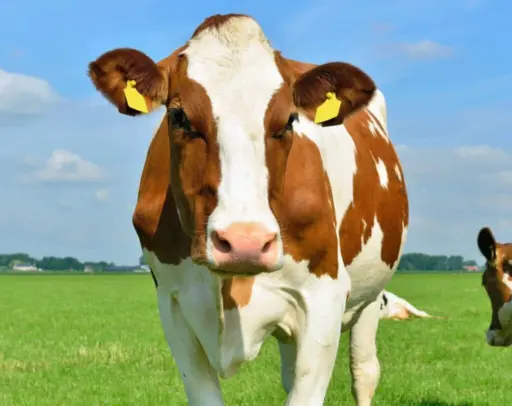
Red & White
Origin: The Netherlands.
Characteristics: Knowing that Red and White dairy cattle generally carry strong Holstein genetics, their origin and history are that of their black and white relatives, except their spots are red. These cows weigh around 1,400 pounds when fully grown. They are also known as high milk producers – each cow produces around 2,900 gallons of milk each year.
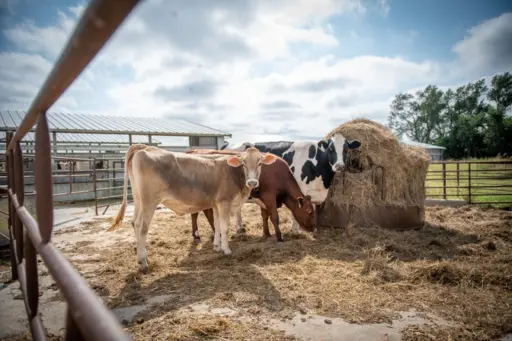
Frequently Asked Questions
How much milk does a cow produce per day? How do cows ‘upcycle’? Do dairy farmers care about their cows? Why would a dairy farmer use antibiotics, and does it get into milk? Are dairy farms sustainable? How is the dairy industry becoming more sustainable?
Learn the answers to those questions and more by visiting our Farm Life FAQ and Dairy Sustainability FAQ pages!
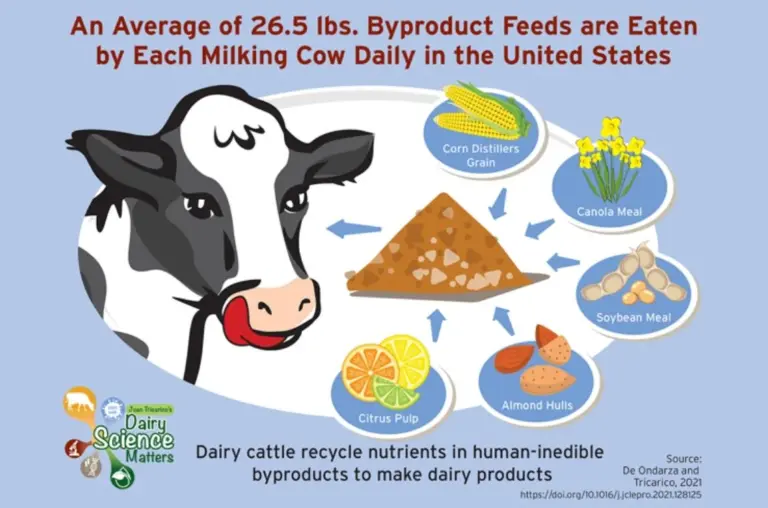
Dairy Cows and Sustainability
Dairy cows are the ultimate upcyclers! They eat byproducts that humans cannot eat, like sugar beet pulp. Some dairy farmers even partner with local businesses like grocers and stores to feed their cows products these partners are unable to sell, like expired fruit and chocolate. This reduces the food waste going into landfills.
Cow manure can be a source of energy, too! Technology like methane digesters can convert manure into biogas, a renewable fuel to help power generators or water heaters. Excess biogas can also be sold back to electric grids. Farmers also use cow manure to fertilize their crops, which reduces the need for chemical fertilizers and pesticides.





